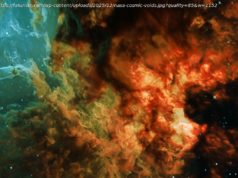 Earlier this week, Tepco, the Japanese company in charge of cleanup operations at Fukushima Daiichi, seemed to be on the verge of announcing rare good news. Specifically, the company had found some of the fuel debris associated with the failure of Reactor #2 at the bottom of the reactor’s containment vessel. Locating the damaged reactor’s fuel (or what’s left of it) is critical to the clean-up effort.
Earlier this week, Tepco, the Japanese company in charge of cleanup operations at Fukushima Daiichi, seemed to be on the verge of announcing rare good news. Specifically, the company had found some of the fuel debris associated with the failure of Reactor #2 at the bottom of the reactor’s containment vessel. Locating the damaged reactor’s fuel (or what’s left of it) is critical to the clean-up effort.
What the company ultimately discovered, however, is that the amount of radiation pouring off the damaged reactor below the reactor pressure vessel is 530 sieverts per hour, vastly higher than had previously been communicated. Previous measurements of the radiation inside the containment vessel had pointed to an exposure level of 73 sieverts per hour.
One thing I want to note at this point is these findings are being misreported across the internet as evidence Fukushima’s radiation output is “spiking” or “soaring.” This is not the case. The radiation levels within Reactor #2’s containment vessel have been largely unknown for years, due to the difficulty of getting proper readings from remote equipment in the first place. The entire reason Tepco used muon tomography to examine the interior of both Reactor #1 and Reactor #2 was because they didn’t have another means of identifying where fuel was inside the reactors. The 73 sievert metric is mentioned in reports dating back to 2012 — I’m not sure when or how Tepco measured it, but implying this is a sudden leap in radiation output is simply inaccurate.
That said, 530 sieverts is a great deal of radiation. One sievert is the maximum amount of radiation exposure NASA allows for astronauts over their entire lifetime. And it’s clear Tepco didn’t expect this problem — the company has been working on a robot it could use to directly examine the containment vessel in much greater depth, proclaiming the radiation-hardened robot would withstand a dose of 1,000 sieverts.






